Why Is Printer Ink So Expensive?
Posted by Rob Errera on 07/02/2024

✅ Quick Answer:
Ink cartridges are expensive so companies can make a profit.
Most printers are sold at a loss. A manufacturer makes money NOT by selling consumers an inkjet or laser printer, but by selling the supplies needed to print.
The manufacturer controls the technology and the prices.
Why Are Ink Cartridges So Expensive?
If you own a printer you know the harsh truth: printer ink is expensive (and printer toner is expensive too).
But why?
Why does it cost more to replace the cartridges than the printer itself?
Ink cartridges are costly because companies make their profit from them, not the printers, which are often sold at a loss. Manufacturers control the technology and pricing of the supplies needed to print.
How much does printer ink really cost?
Back in 2013, Consumer Reports determined the ink inside inkjet cartridges cost between $13 to $75 per ounce!* That’s more expensive than the world’s finest perfumes!
Now, how much is printer ink per gallon?
Let's do quick math.
There are 128 ounces in one US liquid gallon:
128*[$13, $75] = [$1664, $9600]
So, the printer ink price per gallon is between $1,664 - $9,600.
And $20 billion is consumed around the globe every year!
Not 1 billion dollars... 20 billion dollars!
Is printer ink overpriced?
Maybe.
The quick and simple answer is rarely the complete answer. There are many reasons why ink cartridges are not cheaper.
Let’s look at the top seven reasons ink is so expensive.
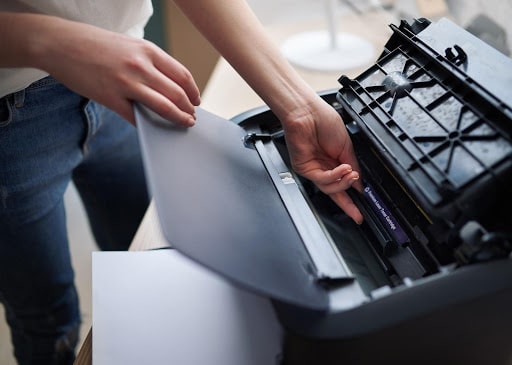
Time to replace your cartridges? Ink is expensive! Get ready to open up your wallet as well as your printer.
⚡
Got a moment? Help us improve your printing experience!
Take our quick survey and share your printing experience with us:
➡️
Take the Survey
Your participation is greatly appreciated and makes a real difference!
1. Your Printer Is Free…Replacement Ink Is So Expensive
This is the basic business paradigm that all printer companies operate under.
HP, Brother, Epson, Canon, and the other big printer manufacturers make very little money in retail sales. Some even take a loss.
But...printer ink — so expensive!
Companies know they’ll make it up in replacement supplies over the life of your printer.
Often, printers sell at or below cost, drawing a consumer in with tantalizing low prices. These manufacturers know the overwhelming majority of consumers will stick with genuine OEM rather than opting for less reliable remanufactured and compatible third-party products.
This is sometimes referred to as the “razor blade” business model.
A razor is cheap because the manufacturer makes money retailing replacement razor blades to consumers. Hair keeps growing and razors will always be in demand.
The same is true of printing supplies.
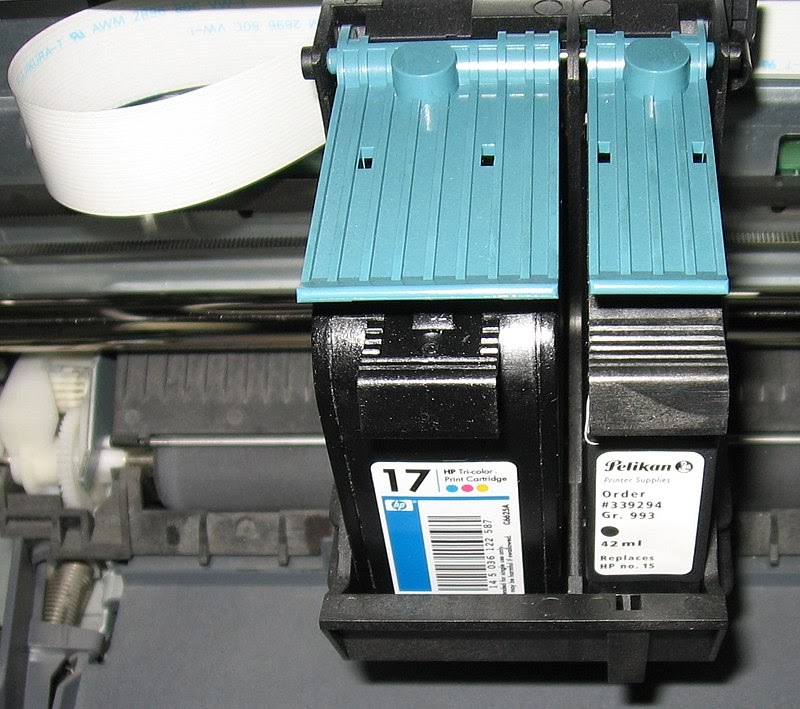
A genuine HP cartridge snuggles up alongside a non-OEM ink cartridge inside an HP Envy printer.
2. Ink Research and Development
Research and development are often cited as the main reason for the high cost of supplies for inkjets and laser printers.
HP claims it invests $1 billion annually in ink research and development, holding 9,000 patents related to imaging and printing, including 4,000 for consumables like ink and cartridges.
Extensive technology goes into cartridge manufacturing. Inks are specially formulated for each brand and type.
Printers and copiers are designed to work best with OEM cartridges. This factors heavily into replacement cartridge pricing.
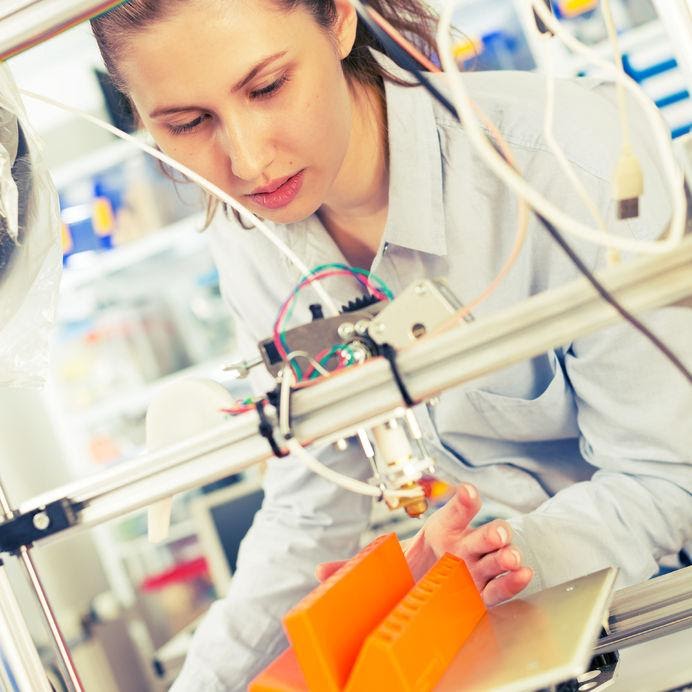
R&D: Research and development aren’t easy...or cheap!
3. Ink Is Complicated
People have used ink to draw since the 4th century BC, and it has been used to power computer printers since their invention. Much ink production is a complex process. So is the printing process.
Check out this cool tech production video from The Printing Ink Company to see how printer ink is made:
Some printer makers - Canon, Hewlett-Packard, and Lexmark - use a thermal process.
The chambers inside printer cartridges have a thin filament running through them. When the filament is heated, the ink bubbles, and the buildup of pressure propels a droplet from the ink cartridge, through the print head, and onto the paper.
Epson and Brother printers use a piezoelectric process, where an electrical charge varies the shape of piezoelectric material inside the cartridge. This caused a pulse of pressure to expel ink through the print head and onto the paper.
(Inkjet troubles? Find out how to clean a clogged print head!)
Regardless of which machine you own, and which process you use, the most important components — ink cartridges — must be well-designed in order to prevent malfunctioning.
Why is printer ink so expensive?
The human thinking that goes into the high-tech design!
4. You Pay for the Best
Genuine OEM ink is still the highest quality and safest option for printer owners, but with quality comes higher prices.
How expensive is printer ink?
For example, a new set of cartridges for your high-end inkjet printer can cost as much as the printer itself, if not more.
Yeah, it’s that expensive.
Sure, you can buy compatible or remanufactured cartridges instead of brand-name, OEM printing supplies, but there’s no guarantee your printer will perform as promised.
Compatible and remanufactured cartridges can save you money, but they’re notorious for low page yields and spotty image quality.
It’s like filling the tank of your sports car with junk gas and having it sputter, backfire and stall until the bad gas runs out of its system.
However, there is a way to balance cost and quality. If you are committed to using genuine products like those from HP, consider looking at HP discount coupons. These coupons can provide substantial savings on OEM cartridges, making them a more cost-effective option.
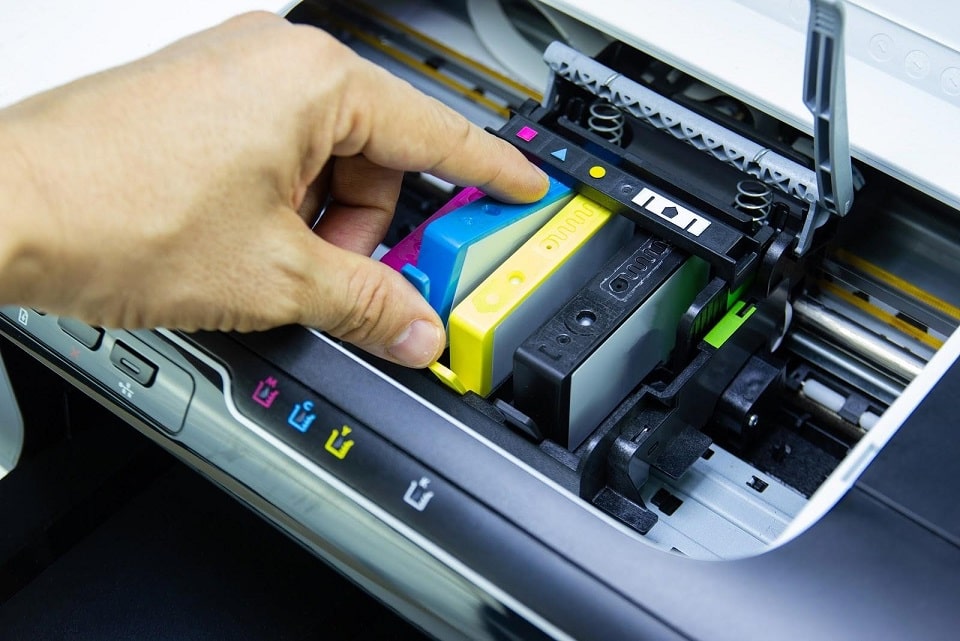
Ink is specifically formulated for each type of machine, which is one of the reasons it is so expensive, according to printer companies.
5. Supply and Demand
Almost every office — including your home office — has at least one printer, if not multiple machines. With the rise in home office use and homeschooling, domestic printers are taking on a bulk of workforce printing tasks.
The demand for ink is consistently high with minimal fluctuation. As a result, the prices for OEM ink will remain high as well.
Since the beginning of the COVID pandemic the prices of ink have been going up. In late 2022, HP has announced an additional 5% price hike on their products.
Printer owners are left with the task of finding the best prices available for genuine replacement ink, which typically does not come from big-box retailers.
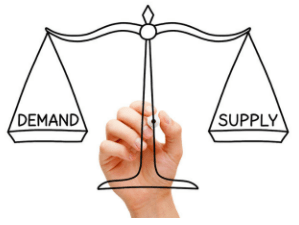
If you want the best price on replacement printer cartridges, you have to look online. (But don’t worry - you don’t have to look far!)
6. Specialization
Ink cartridges are not one-size-fits-all. There is a great deal of specialization in printer ink design, increasing R&D and manufacturing costs.
When buying replacement ink cartridges for your printer, you need to be informed.
For starters, you’ll need to know your printer make and model in order to buy the right replacement printing supplies.
In addition, almost every cartridge comes in an XL, or high-capacity version. If you do a lot of printing, these high-capacity cartridges can help lower your overall cost per page.
Most inkjet printers use four separate color ink cartridges: blue (C), red (M), yellow (Y), and black (K).
Try to avoid printers that use all-in-one tri-color cartridges. They waste ink when only one color runs out.
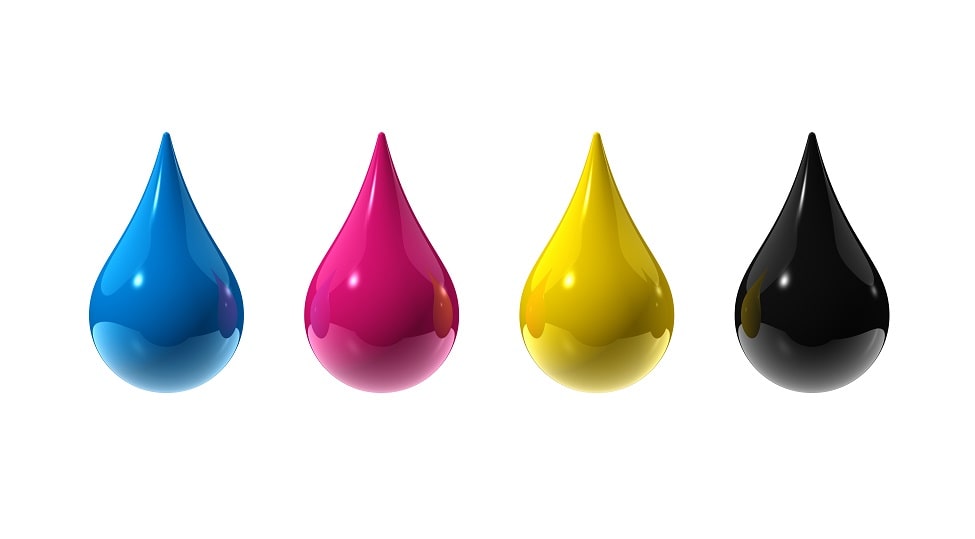
Printers using separate color ink cartridges (CMYK) are more cost-effective when it comes to ink and toner prices.
Some high-end inkjet printers and photo printers use more than the standard four ink cartridges.
Technicians add specialized ink to a modern printing press.
7. Printer Cartridges Are Built To Fail
So are printers. And televisions. And smartphones.
Most electric devices sold today are manufactured with an intended lifespan.
Sure, printer companies can build electronics that last for decades, but where is the profit in that?
We live in an age of disposable electronics.
Unfortunately, those electronics are often filled with potentially hazardous materials.
Make sure your electronic waste gets properly recycled!
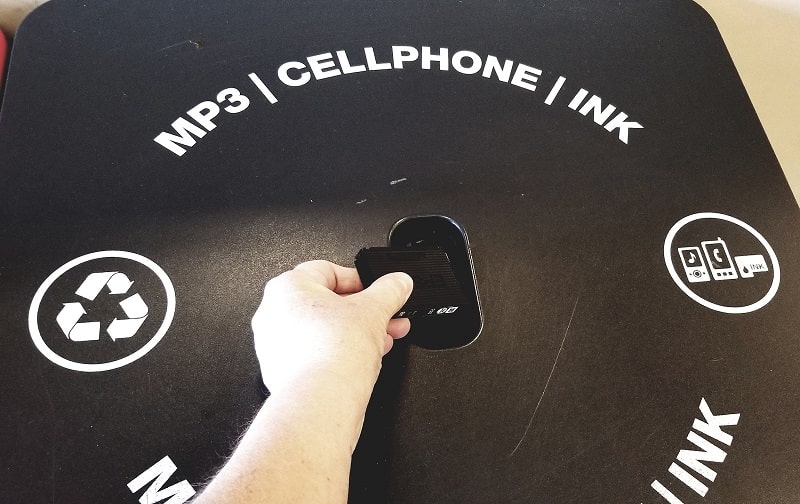
Recycle those empty ink cartridges!
Getting Longer Life From Your Ink and Toner Cartridges
- If you don’t use your printer for long periods of time, your print-heads can dry out. Use your printer once a week, and run routine maintenance (head alignment, nozzle check, etc) once a month.
How To Fix Dried Ink Cartridges With Nozzle Techniques
- Store your ink and toner cartridges properly. Keep your supplies in a cool dry place until you're ready to use them.
- Certain fonts use more ink than others. Arial looks clean and simple, but it’s a thirsty hog. Stick with Times New Roman, Courier, or Garamond typefaces to save consumption. The goal is buying less and getting your supplies to do more!
- Consider switching to draft or grayscale mode to save on black ink. Use higher quality setting only for final drafts.
- Check your ink levels often! This can save your bacon! You don’t want to run out of ink in the middle of a big project! Shop ahead!
➜ Check also How To Print Without Black (Tip: Use Other Colors)
Other Ways To Combat Expensive Ink and Toner
Consider Non-OEM Printer Ink & Toner
It kills us to admit this, but there are some high-quality non-OEM replacement inks and toners on the market.
We continue to stick by our belief that original equipment makes the best imaging replacement products. The image quality and page yields will be higher with OEM cartridges.
However, if you’re on a tight budget and willing to sacrifice a bit on quality and page yield, you might want to consider one of the more reputable third-party cartridges on the market.
They may use cheaper technology, but it’ll work in a pinch. You really need to shop around first.
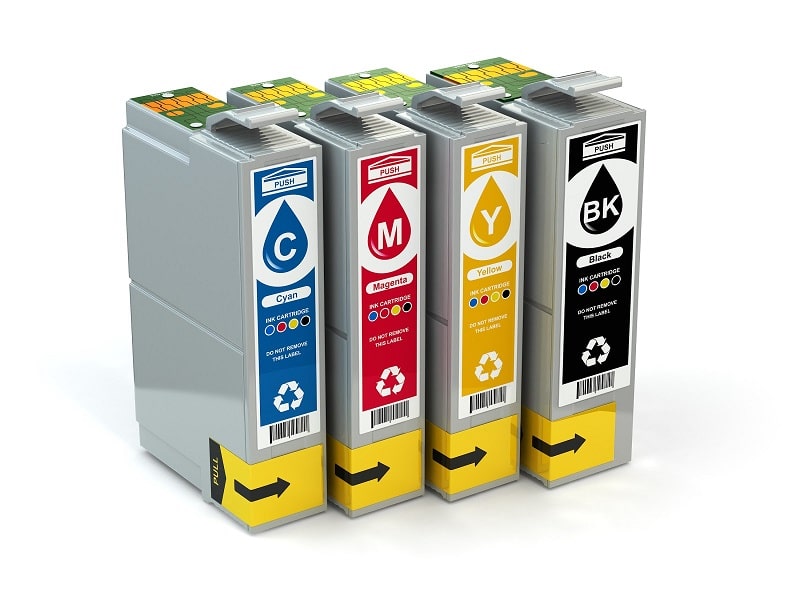
Generic, third-party ink isn’t pretty, but it can save you a pretty penny.
Refilling Ink Cartridges
We absolutely hate this idea! It’s messy and awkward when cartridges are refilled. Syringes and slop cloth...not for us!
Try if you must, but you’ll find refilling inkjet printer cartridges is more hassle than it’s worth. Thumbs down on refilled cartridges!
Consider Your Printing Needs
Don’t just run out and buy OEM replacement cartridges if you don’t need to. If the bulk of your print volume consists of black text documents, cut corners on how much you consume and save some money.
Change your settings to grayscale. Save the set of expensive OEM cartridges for when you’re printing family photos on glossy paper and use cheap cartridges the rest of the time.
It is actually far better to think ahead a bit in terms of what your future needs may be. Running out to a retail store for replacement cartridges is the last course of action you want to take.
Plan ahead on what you buy and you’ll save on unexpected costs.
Automated Ink Refill Programs
Most printer makers have automatic refill programs that they’re happy to sign you up for.
While this may be a convenient and cost-saving solution for some, we’ve heard horror stories about costly automated refills and difficulty unsubscribing from automated ink refill programs.
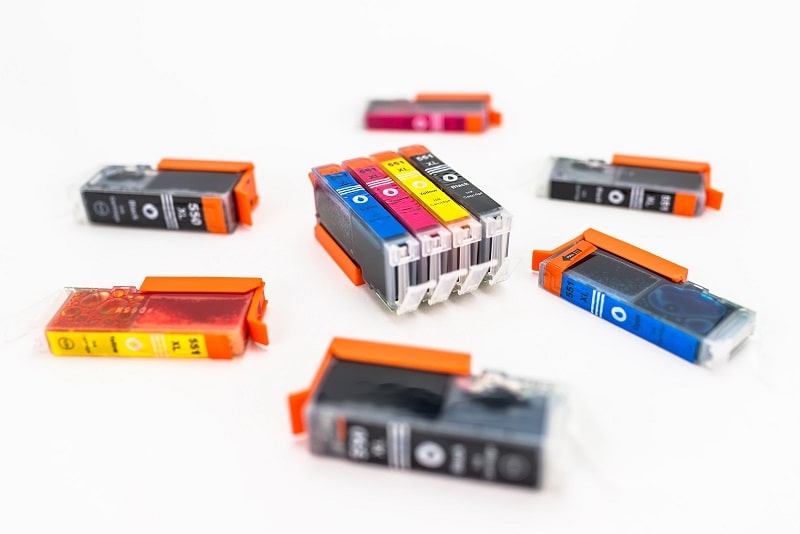
The world revolves around ink costs...at least our world does!
Why Is Toner So Expensive?
Toner is so expensive for the exact same reasons why ink is expensive:
- Supply and demand
- Research and development
- Specialization
- Toner brands pricing strategies
- and other reasons we discussed in this article
However, it also worth noting that printer toner as a more advanced technology delivers better printing cost per page compared to printer ink.
Nevertheless, overall toner cartridge prices are of course still quite high.
Don’t Like High Toner and Ink Prices? – Shop With Toner Buzz
If you want to pay the lowest price for genuine, brand name ink and toner cartridges (and who doesn’t!) look no further than Toner Buzz.
No matter what you need to power your printer — inkjet or laser — we have it at the lowest prices around.
And we’ll ship to you for free!
Additional Resources
- How To Turn Off HP Instant Ink?
- How to Clean Your Laser Printer and Toner Cartridges
- A Practical List of Laser Printers with Cheapest Toner
- The Cheapest Printer Toners 2023 by Brand (All Under $60!)
- Grrr! HP Printer Owners Outraged By Update That Blocks Non-HP Cartridges
- HP Toner Price List: Most Popular HP Toner Cartridges and Their Pricing
 Calculating arrival date
Calculating arrival date









